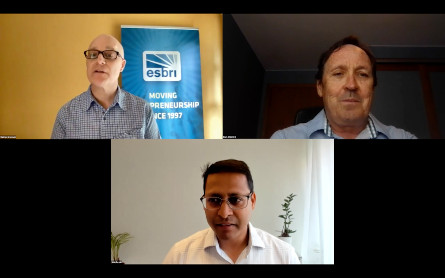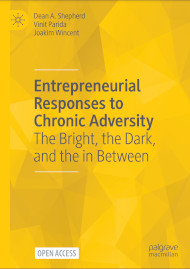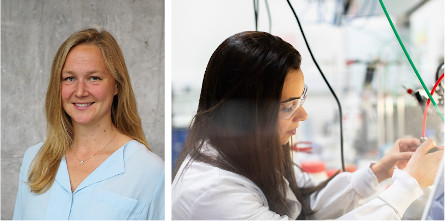Exploring the light and dark side of entrepreneurship
- Publicerad: 22 jun 2022,
- 12:00 f m
- Uppdaterad: 22 jun 2022,
- 4:15 e m

People in chronical adverse environments run businesses to survive the day – for better or for worse. In a new book, three professors shed light on the light and dark side of entrepreneurship. The book was launched at a webinar organized by Esbri on June 16.
Professor Dean Shepherd, Notre Dame University, USA, and Vinit Parida, professor and scientific director of Norrlandsnavet at Luleå University of Technology, Sweden, are both prominent entrepreneurship researchers. They have studied entrepreneurship in chronically adverse environments. More specifically, how entrepreneurship can be a way for people to survive the day – and how it affects the individual. But also how entrepreneurial practices can wreak havoc on people and communities. Together with Joakim Wincent, professor at the University of St. Gallen, they have written the book Entrepreneurial responses to chronic adversity, which can be downloaded for free.


One of the studies is from a slum area in India”s capital Mumbai. There, many entrepreneurs are highly creative and productive, according to the researchers.
– The driving force is the children. They run businesses so they can send their children to school and eventually move out of the slums, said Dean Shepherd.
Vinit Parida talked about how easy it is to think that people start businesses to get out of the slums. But instead, it”s all about being a role model for their children and the community at large.
– That attitude reflects the importance to consider the context when you define what is a success. Slums are a special environment; what entrepreneurs do, cannot be replicated successfully elsewhere. The environment both triggers people into entrepreneurship and gives back to them. It”s interesting for how they deal with the situation,fnutt he said.
Entrepreneurship among Palestinian refugees in Lebanon has also been studied. Based on the study, the researchers have developed an entrepreneurship model to understand creative problem solving and resilience in resource-constrained environments.
The dark side of entrepreneurship
– We need to understand the underlying factors to do something about the dark side of entrepreneurship such as sex trafficking and corruption, said Dean Shepherd at the webinar.
The researchers have studied the dark side of entrepreneurship by looking closer at the systematic corruption and the sex industry in India as two different examples. Entrepreneurs in the sex industry lure poor girls into the industry. Those who manage to get out of the sex industry find it difficult to get back into society, they are heavily stigmatized once they are back in their home village.
In another project the researchers looked closer at an entrepreneurship training program for older women from rural villages in a very patriarchal region of India. In this program the women took courses in entrepreneurship and solar energy.
According to Shepherd, the training was successful in that everyone was interested in taking the course and all the graduates went on to start businesses. On the other hand, the training raised feelings of disappointment in the women about their past. And the optimism about the future that had been built up during the training disappeared when they realized that entrepreneurship itself was not giving them what they had hoped for. They were still stigmatized in their home village.
– We need to be careful not to create entrepreneurship education initiatives that make people in this context feel bad about their past. And we need to look at what we can do to make entrepreneurship improve people”s lives. It shouldn”t make already vulnerable people feel worse, Dean Shepherd said.
The developing world can learn from poor entrepreneurs
Dean Shepherd believes that poor people who run businesses don”t get the attention they deserve. And that the developed world can learn from the developing world when it comes to innovation and entrepreneurship.
– Many are creative and innovative, by taking advantage of the scarce resources around them and creating new uses for them. The rear wheel of a motorcycle can be used as a water pump with a little creativity, he says, referring to a picture in the presentation.
Vinit Parida, who works with large industrial companies in northern Sweden, says they too can take inspiration from resource poor entrepreneurs when organizing for innovation.
– With digitalization and automation, the opportunity for innovation has increased dramatically. Instead of thinking big projects, let engineers and experts work in smaller teams with fewer resources. And let them focus on what they are passionate about,fnutt says Parida.
Contact
dshephe1@nd.edu
vinit.parida@ltu.se




